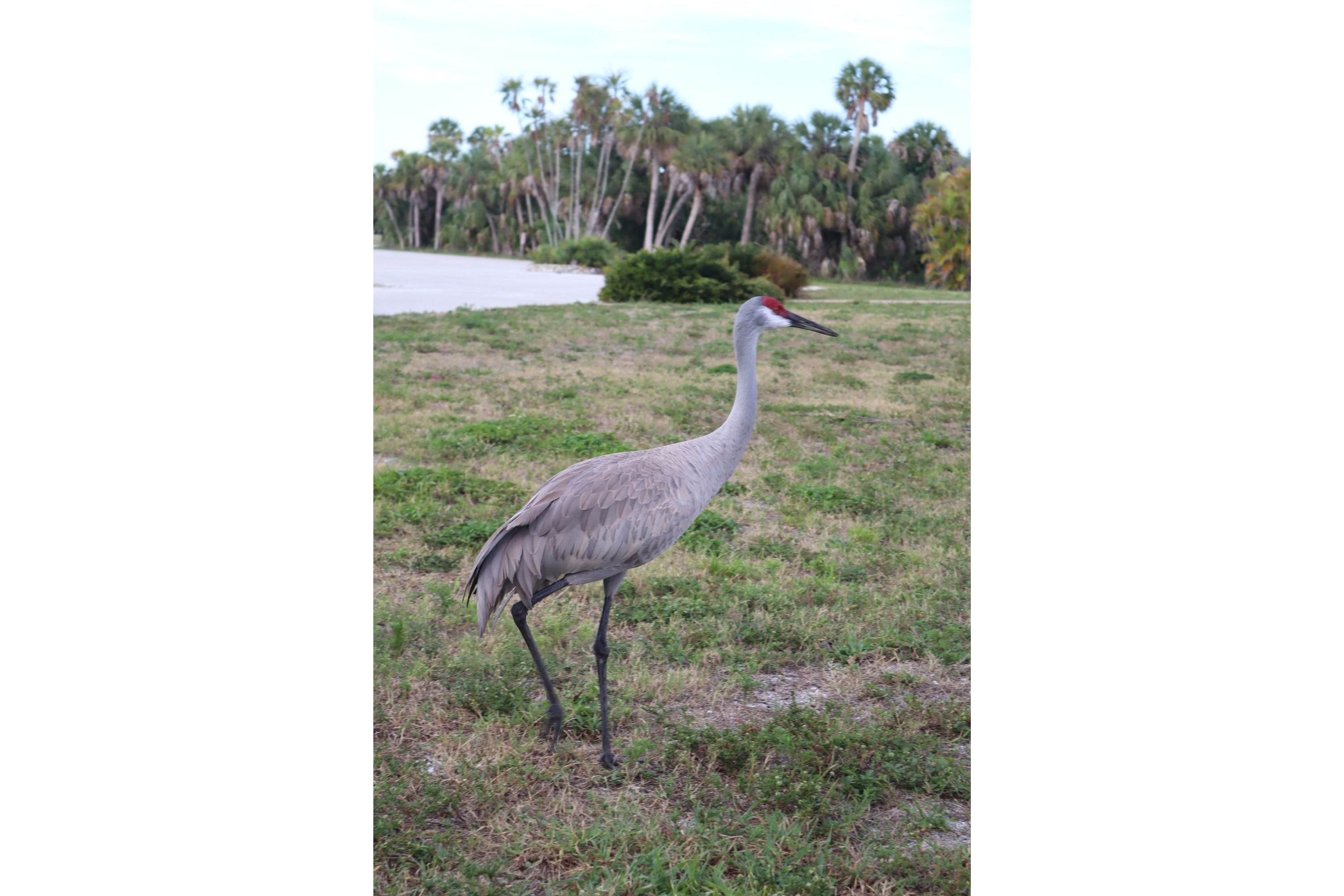Sandhill crane
(Grus canadensis)

Description
Grus canadensis, commonly known as the Sandhill Crane, is a large species of bird that belongs to the family Gruidae. These cranes are found in North America, and are known for their unique appearance, distinctive calls, and impressive courtship displays. They are also an important cultural symbol for many indigenous communities in the region. In this article, we will explore the physical characteristics, habitat, behavior, diet, and conservation status of the Sandhill Crane. Physical Characteristics The Sandhill Crane is a tall bird, measuring up to 4.5 feet in height and with a wingspan of up to 7 feet. They weigh between 6 and 14 pounds, with males typically larger than females. These cranes have long, thin legs, a long neck, and a broad, straight bill. Their plumage is generally gray, although their head and neck are often darker in color. Juvenile cranes have a reddish-brown coloration, which gradually fades as they mature. Habitat Sandhill Cranes can be found in a variety of habitats, including wetlands, grasslands, and agricultural fields. During the breeding season, they typically nest in shallow wetlands or marshes, where they construct large, circular nests made of reeds and grasses. Outside of the breeding season, they can be found in larger flocks, often roosting in shallow water or on sandbars. During migration, they may travel long distances, covering up to 500 miles in a single day. Behavior Sandhill Cranes are known for their unique calls, which can be heard from great distances. These calls are used for communication between individuals, particularly during courtship and nesting. During courtship displays, cranes will engage in a series of elaborate behaviors, including dancing, bowing, and vocalizing. These displays are often accompanied by the beating of their wings, which produces a distinctive drumming sound. Diet Sandhill Cranes are omnivores with a diverse diet that includes both plant and animal matter. Their diet varies depending on the season and availability of food. During the breeding season, they primarily feed on invertebrates such as insects, snails, and crayfish, which provide high protein content needed for the growth and development of their young. Outside of the breeding season, their diet shifts to a greater proportion of plant material such as seeds, grains, and roots, although they may still consume small animals such as rodents, reptiles, and amphibians. Sandhill Cranes have also been observed feeding on waste grain in agricultural fields, which can make up a significant portion of their diet in some areas. Overall, their diet is adaptable and varies depending on the availability of food in their habitat. Conservation Status The Sandhill Crane is considered a species of least concern by the International Union for Conservation of Nature (IUCN). However, there are several subspecies of Sandhill Crane that are of conservation concern, including the Florida Sandhill Crane and the Mississippi Sandhill Crane. These subspecies have smaller populations and are at risk due to habitat loss and degradation, as well as hunting and predation. Efforts are underway to protect and conserve these populations, including habitat restoration and reintroduction programs. Conclusion The Sandhill Crane is a fascinating and iconic bird of North America, known for its distinctive calls, elaborate courtship displays, and impressive size. Although they are considered a species of least concern, some subspecies of Sandhill Crane are at risk due to habitat loss and other threats. By understanding the biology and behavior of these birds, we can work to conserve and protect them for future generations to enjoy.
Taxonomic tree:







